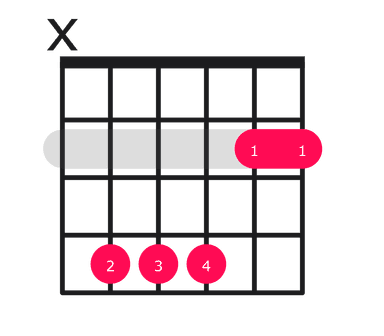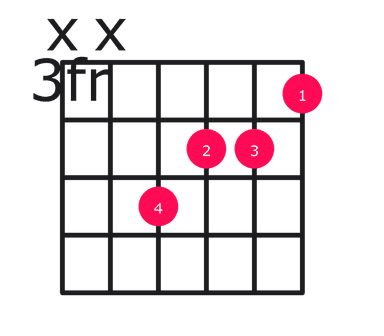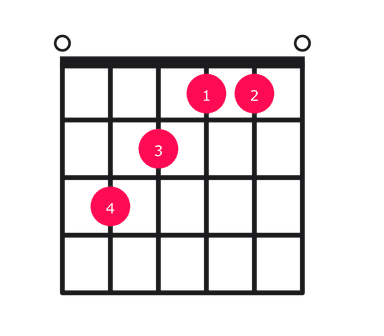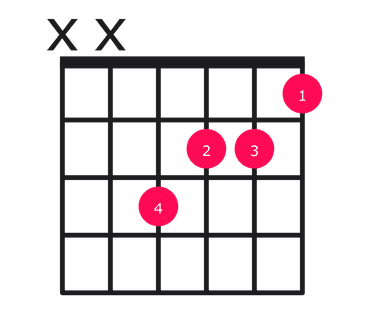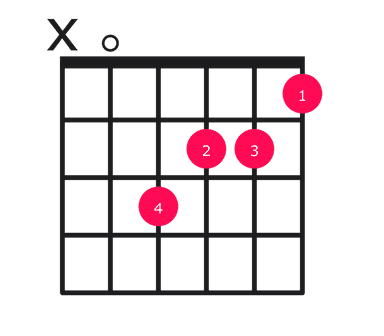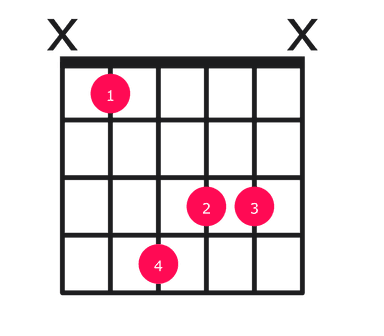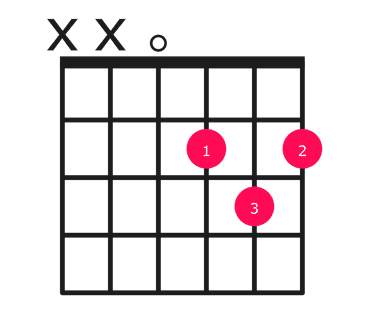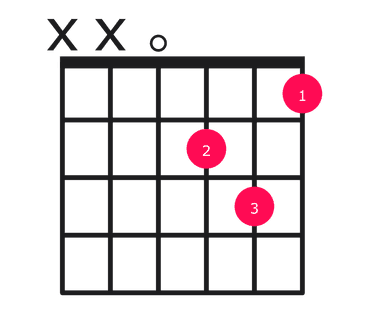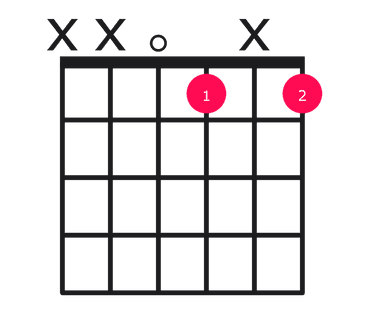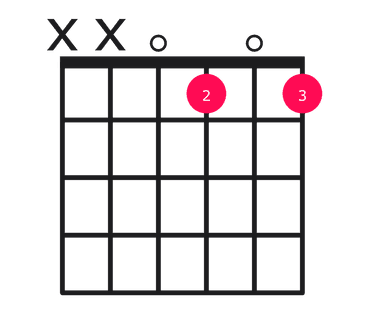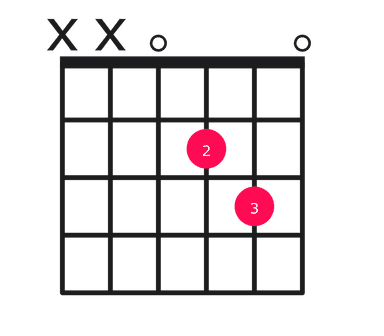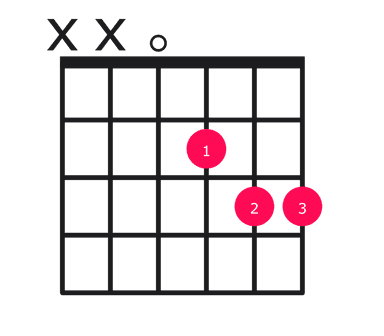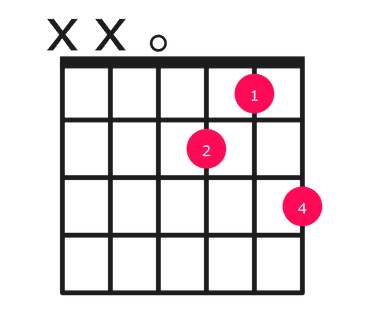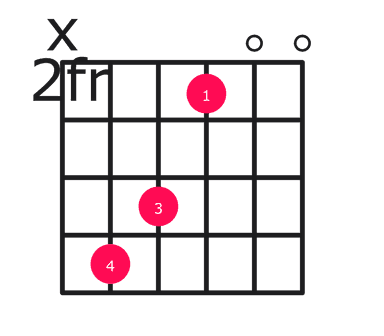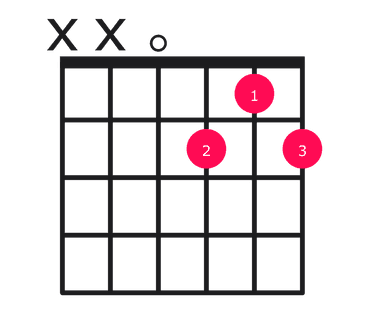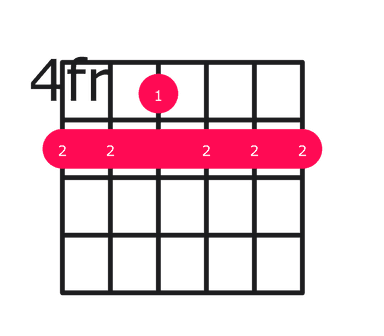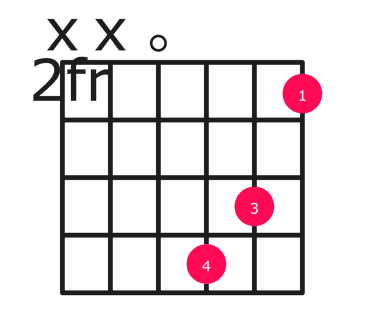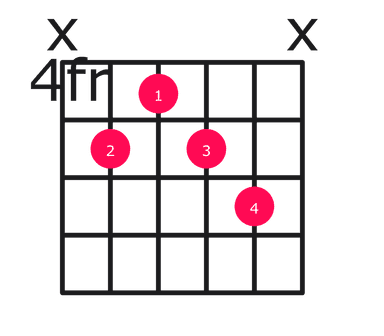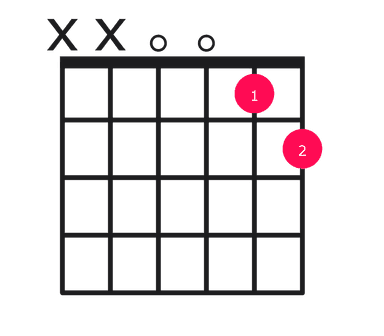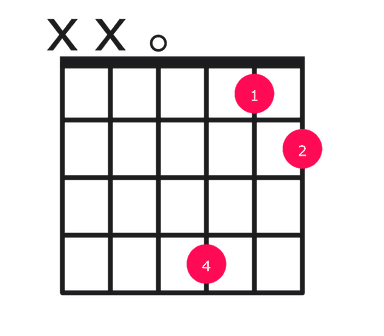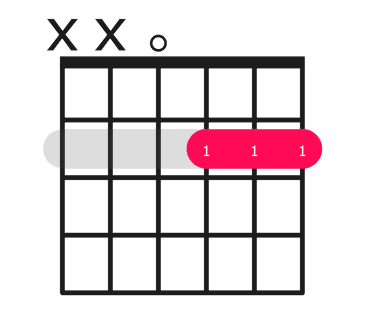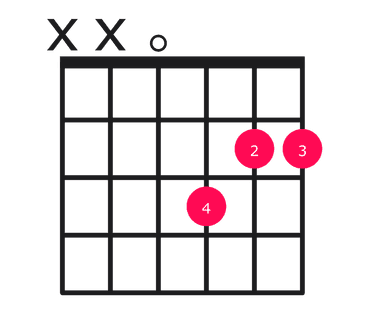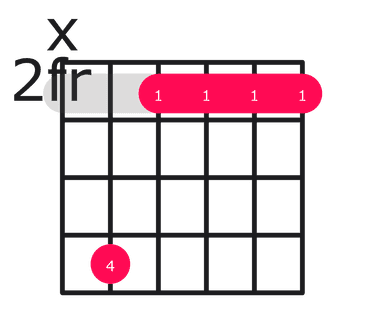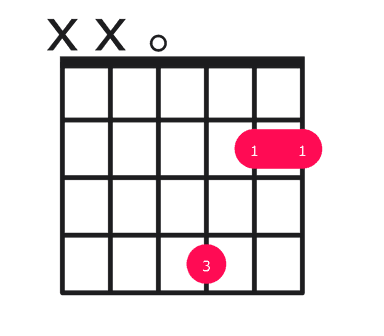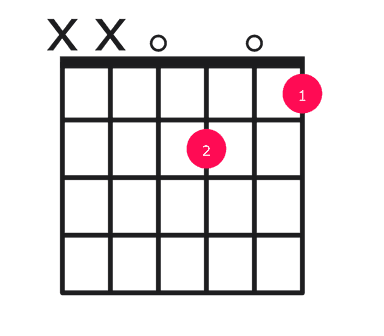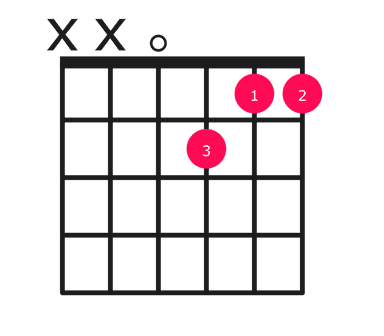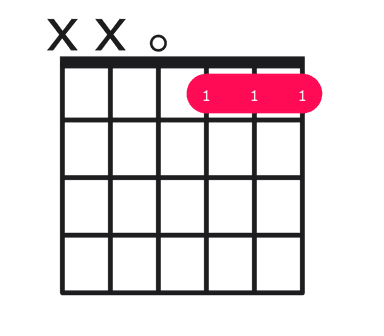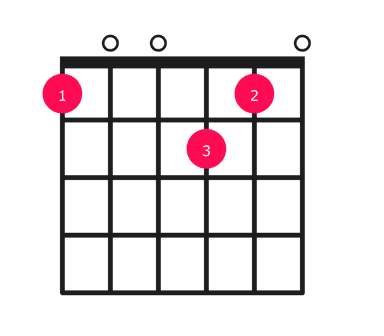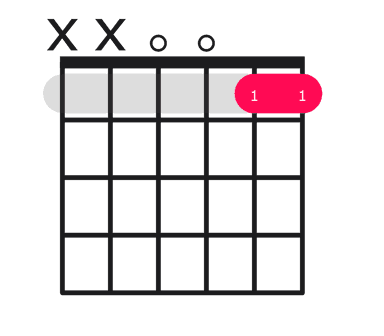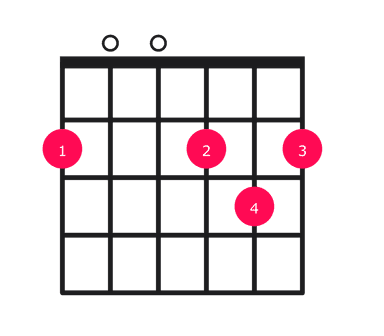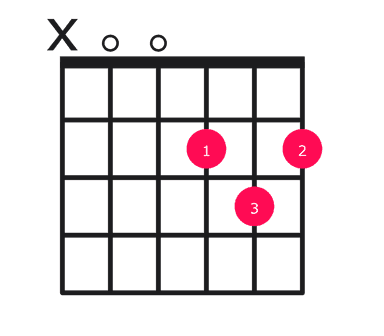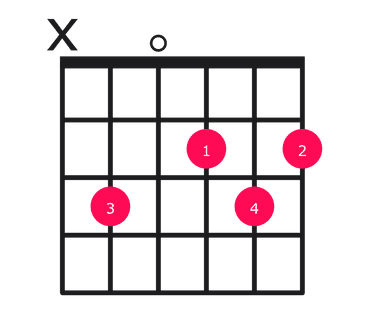How to play the Daug chord on guitar
Unlock the secrets of "Stairway to Heaven" and "Hotel California" with one chord.
The Daug chord
The Daug chord, pronounced D augmented, is a triad consisting of the notes D, F#, and A#. This chord has a bright, tensionrising sound due to the augmented fifth interval. It's commonly used as a passing chord in jazz, classical, and rock music to create harmonic interest and tension. Notable examples include Beatles songs like "From Me to You" and "Oh! Darling."
There are many ways to play a chord. Here's a diagram for the most common Daug chord. We've also included other versions below.

Unlock your playing potential in online guitar lessons with experts on Til. Start today and achieve your guitar goals quickly. Find a top-rated teacher.
Finger placement for Daug chord
The most common way to play the Daug chord on guitar is as a barre chord on the 1st fret.
Follow these finger positions to play a Daug chord on your guitar:
- Place your index finger across all six strings on the 1st fret, creating a barre.
- Place your middle finger on the 2nd fret of the 3rd (G) string.
- Place your ring finger on the 3rd fret of the 5th (A) string.
- Place your pinky finger on the 3rd fret of the 4th (D) string.
Strum all six strings together to play the Daug chord. Make sure to apply enough pressure with your index finger to properly fret all the strings in the barre.
How to play an easy Daug chord on guitar
If you're a beginner looking to play a simpler version of the Daug chord, try this:
Place your first finger on the 4th fret of the D string, second finger on the 5th fret of the G string, and third finger on the 6th fret of the B string. Leave the high E string open. Strum only the four highest strings.
How to play a Daug bar chord
I'm not aware of any standard barre chord shape for a Daug chord that is widely used by guitarists. The augmented chord is less common than major, minor, and dominant 7th chords, so barre chord shapes for it are not as well established or frequently played.
Common Daug chord progressions
The Daug chord, also known as the augmented chord, adds a sense of tension and dissonance to chord progressions, often creating a feeling of suspense or uncertainty. Some common chord progressions featuring the Daug chord include:
- I - Idim - Daug - I (C - C°/Dbdim - C+ - C): Used in "Oh! Darling" by The Beatles
- I - Daug - vi - V (C - C+ - Am - G)
- ii - V - Idim - Daug - I (Dm - G - C°/Dbdim - C+ - C)
- I - IV - Daug - I (C - F - C+ - C): Used in "Crying" by Roy Orbison
- vi - Daug - I - V (Am - C+ - C - G)
Drills to master the Daug chord
To master the Daug guitar chord, try practicing the chord progression Daug to D major. This drill helps your fingers adapt to the unique shape of the Daug chord while reinforcing the transition between the two chords.
Another effective drill is to play the Daug chord as an arpeggio, plucking each note (D, F#, A#) individually. This exercise improves your finger dexterity and ensures each note rings out clearly when strumming the chord.
Unlock your playing potential in online guitar lessons with experts on Til. Start today and achieve your guitar goals quickly. Find a top-rated teacher.
Ellie G.
"Everything about this class was just absolutely fantastic. If you are a passionate guitarist and you are up to a challenge or even just learn something new, than this is definitely the class for you! Don't think twice about it, take the class!"
Songs that feature the Daug chord
Here are 10 popular songs you can play with the Daug chord.
- All Along the Watchtower by Bob Dylan (Am, C, D, Daug)
- Don't Think Twice, It's All Right by Bob Dylan (C, D, Daug, G)
- Stairway to Heaven by Led Zeppelin (Am, C, D, Daug, Em, G)
- While My Guitar Gently Weeps by The Beatles (Am, C, D, Daug, Em, G)
- Hey Joe by Jimi Hendrix (C, D, Daug, G)
- Wish You Were Here by Pink Floyd (C, D, Daug, Em, G)
- Knockin' on Heaven's Door by Bob Dylan (C, D, Daug, G)
- The Boxer by Simon & Garfunkel (C, D, Daug, Em, G)
- Tears in Heaven by Eric Clapton (A, C, D, Daug, G)
- Blackbird by The Beatles (C, D, Daug, Em, G)
How a guitar teacher can help
If you feel stuck in your playing, it might help to take personalized guitar lessons with an expert guitarist. Taking lessons with a pro gives you access to the skills, feedback, and motivation to reach your goals.
You can find expert guitar teachers to support you in the journey. Thousands of people have turned to online guitar lessons on Til, instead of traditional in-person lessons, because Til gives you access to the best teachers in the world from the comfort of home. And with flexible scheduling, secure payments, lesson recordings, and a private chat with your teacher–there’s never been a better way to learn guitar.

